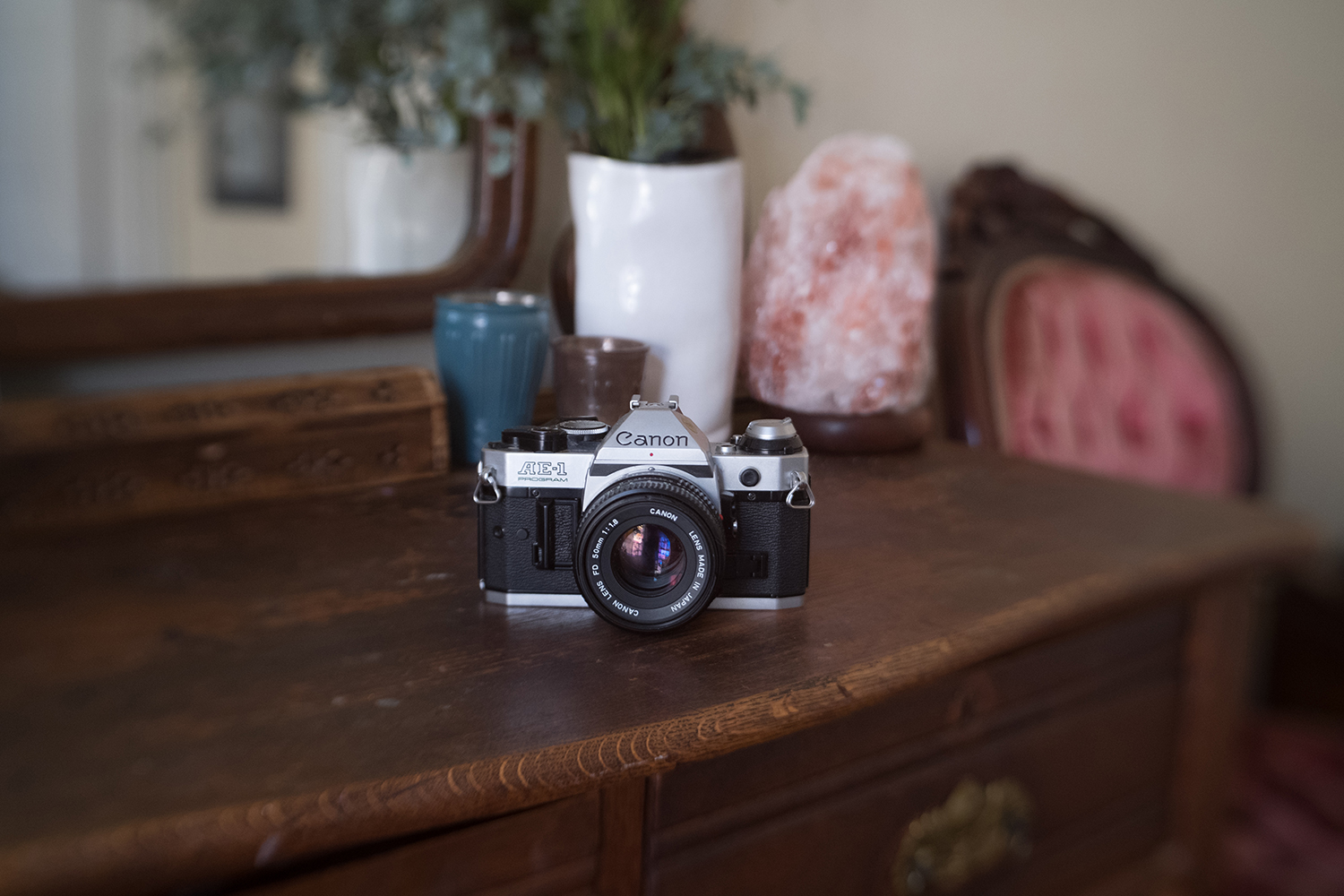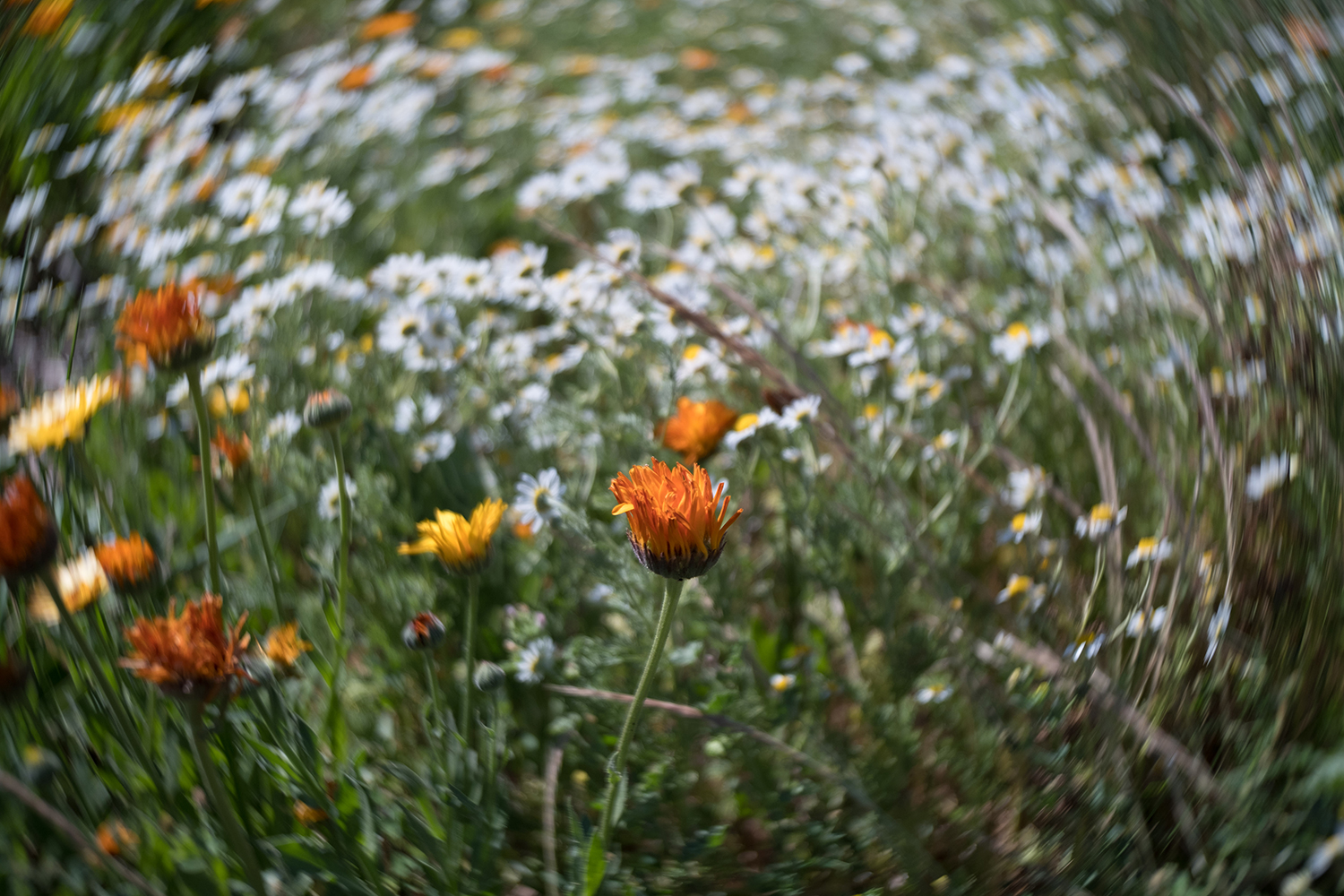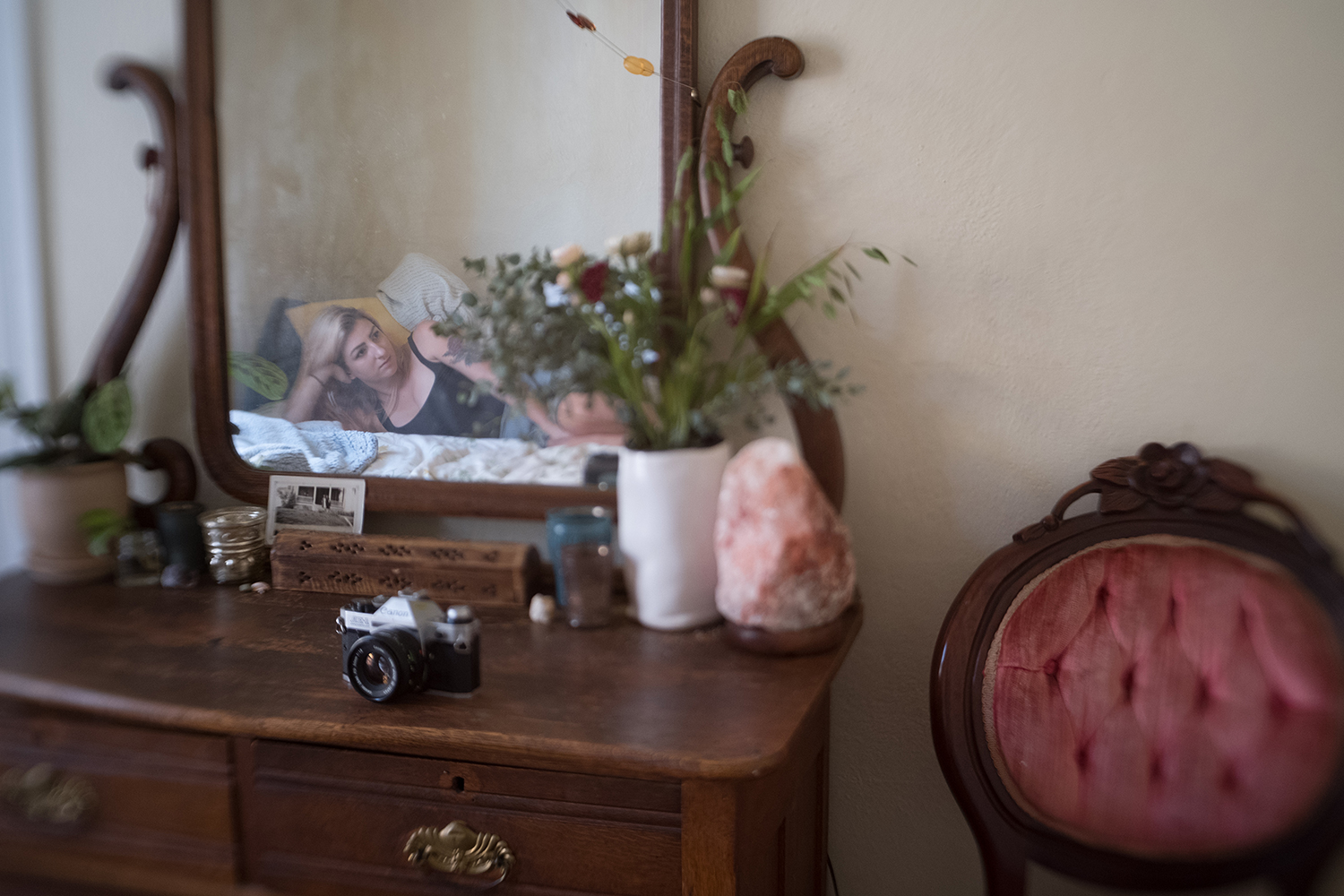“The Trio 28 lens is a great buy, even if most of its value comes from just one of its three optics.”
- Three lenses in one
- Twist optic produces beautiful results
- Compact and lightweight design
- Fun to use
- Good price
- Aperture fixed at f/3.5
- Sweet, Velvet effects are less cool
- Can’t fully match features of standalone lenses
In our Lensbaby Velvet 85 review, we casually mentioned that it was like three lenses in one, but the Lensbaby Trio 28 is literally that. Three separate optics, each with a 28mm focal length, are contained within a single lens and rotate in or out of position, giving photographers three distinct looks to choose from. The design is somewhat reminiscent of three-lens setups on old 16mm motion picture film cameras, except that in this case, each lens provides a unique effect, rather than a different field of view. It comes with some drawbacks compared to using individual lenses, but the end result is a compact and very unique lens for mirrorless cameras that, like most Lensbaby lenses, is delightfully fun and refreshing to use for reasons we’ll get into below in our Lensbaby Trio 28 review.
Fun, but challenging
The Trio 28 looks very different from any other camera lens. It is shaped somewhat like what would be called a pancake lens — being wider than it is long — except that it has an additional, smaller lens barrel tacked onto the front. (So, maybe it’s more of a short stack?)
The second barrel is where the lenses themselves are housed and you rotate it to switch from one to the next, with options for Twist, Sweet, and Velvet effects. The larger barrel houses a manual focus ring, which controls focus for all three optics.
Focal length isn’t the only specification shared across all three of the Trio 28’s lenses. They also share a fixed aperture at f/3.5. This is one downside of fitting three lenses into a single, compact housing. Not only is the aperture relatively slow for a prime lens, but it also can’t be stopped down at all, leaving you with no control over depth of field and forcing you to rely solely on ISO and shutter speed to achieve a proper exposure.
Fortunately, it does have a 46mm filter thread, so you can counter shutter speed limitations with a neutral density (ND) filter (which will be especially necessary if you want to use this lens for video, where shutter speeds around 1/60 of a second are often preferred for aesthetic reasons).
Beginner photographers may become frustrated with focusing manually
Being stuck with one aperture value also means you’re stuck with just one effect intensity. On traditional Lensbaby lenses, the aperture has always offered control over the strength of a given effect.
On Sweet lenses, for example, decreasing the aperture will increase the size of the in-focus sweet spot; Velvet lenses trade their characteristic “glow” effect for increased sharpness as they are stopped down; and the Twist 60 increases the width of the in-focus area and reduces vignetting at smaller apertures. So the Trio 28 trades one type of versatility for another, giving you three distinct effects in one lens, but with only one level of each effect.
Like many of Lensbaby lenses this one is manual-focus only, and while it’s nothing new, the relatively low cost increases its appeal to beginner photographers, who may become frustrated with the process of focusing manually. In our testing, we found it was very easy to mess up focus, even when using the camera’s focus peaking and magnification.
Part of the problem is that the Trio 28 has soft focus by design, particularly the Velvet optic, and it’s simply difficult to know when the focus is truly correct. This is exacerbated by shooting handheld, as we were.
The Trio 28 is designed specifically for mirrorless cameras and is available only in Sony E, Fujifilm XF, and Micro Four Thirds (Panasonic and Olympus) mounts. There is not an equivalent model for DSLRs, but it is compatible with sensor sizes up to full-frame, so you can use it on your Sony A7 II. We tested it on a Fujifilm X-T2, which uses an APS-C sensor, but it seems logical that the effects (particularly with the Sweet and Twist optics) would be even more pronounced on a full-frame camera, as the image area would include light from the periphery of the lens, where the effect is strongest.
Twist
Of the three lenses offered, the Twist optic produced, by far, our favorite effect. It imitates the look of old Petzval lenses, with swirly blur that encircles a tack-sharp subject. It’s a look that’s dangerously addictive at first, and you are likely to overuse it if you’re not careful. Regular old background blur just looks so boring by comparison.
The Twist optic is dangerously addictive; you are likely to overuse it if you’re not careful.
We also liked that the strength of the effect is properly dialed in. It has just the right amount of twist and blur and creates a stunning separation of subject and background.
It definitely works best with busy backgrounds, especially trees, flowers, or other dense foliage, which gives the lens plenty of material to twist and distort. The effect is less noticeable with plainer backgrounds, and this is where we lean toward using one of the other optics.
While opinions will undoubtedly differ from one user to the next, we would not at all be surprised if most photographers spent the majority of their time with the Trio 28 with it set squarely on Twist. Maybe next time, Lensbaby will just give us a Trio with three different focal lengths of Twist lenses. We can dream, right?
Sweet
The Sweet lens creates the classic Lensbaby effect: a center spot of sharpness surrounded by blur that increases toward the edge of the frame. We rated the effect second to the Twist, primarily because at f/3.5, the sweet spot is kind of just in that middle zone, neither small nor large. The effect is less noticeable than that of the Twist, and therefore feels less effective overall. One potential upside is that it is also less distracting, so if you’re after a more subdued look, then the Sweet may have you covered.
That said, we found few instances where we chose the Sweet over the Twist. In fact, we often switched to the Sweet only to return to the Twist shortly thereafter.
Maybe this was just the aforementioned and dangerous addictiveness of the Twist coming into play, but using the Sweet kind of felt like pouring Mrs. Butterworth’s over our pancakes when we could have just as easily reached for pure maple syrup. Sure, some people would prefer the former, we guess, but the point here is that the Twist is great, and the Sweet is something a bit less than great — and we’d rather go with great.
Lensbaby’s other Sweet optics are usually paired with a Composer Pro, the housing for the company’s Optic Swap system that can tilt to change perspective. This allows the sweet spot to be moved around the frame, but of course the Trio 28 has no such flexibility; the sweet spot is always right in the center. Sure, that same restriction applies to the Twist and Velvet optics, but those effects have always been intended for straightforward alignment.
The standalone Velvet lenses don’t tilt at all, and Lensbaby pairs the Twist 60 optic with a non-tilting housing and recommends keeping it pointed straight forward for those who do use it inside a Composer Pro. So while the Trio 28 offers a taste of what Sweet optics can do, it falls considerably short of what its standalone siblings offer.
Velvet
Across all of Lensbaby’s various products, the Velvet series may be the most controversial, for lack of a better word. The Velvet effect is a glow around edges that adds warmth and softness to an image, and is particularly useful if you want a soft-focus portrait look. It has led to some popular products for Lensbaby, but the effect is not the easiest to work with. If used poorly, it just looks like a soft or out of focus image. When used well, it can be quite appealing, but the number of use cases where it really looks good seems to be small.
In the Velvet 56 and Velvet 85 lenses, the strength of the effect can be controlled by the aperture. At smaller apertures, those lenses behave much like standard 56mm and 85mm lenses in terms of their look, which makes them much more versatile. The aperture on the Trio 28, however, can’t be adjusted, so you’re stuck with a set amount of velvety glow. Fortunately, the effect is well balanced at f/3.5, but we still found the Velvet to be our least used lens on the Trio 28. If the Sweet was Mrs. Butterworth’s, the Velvet is more like plain yogurt; better than a dry pancake, but not exactly your first choice.
Warranty
Lensbaby offers a one-year warranty on the Trio 28.
Our take
The Trio 28 is like no other lens on the market, offering three distinct effects in one compact package. And at just $280, it’s quite affordable, as far as lenses go. It’s a different kind of lens, one that is simple enough to be fun, but challenging enough to keep you engaged. Yes, it is more restrained than standalone Twist, Sweet, and Velvet lenses, but it brings these three effects into one product that is small and light enough to carry with you anywhere.
Even if you don’t use it on every shoot, it’s sufficiently cheap and compact to keep it on hand for those occasional moments when it can really work well. Even with a short 28mm focal length (42mm equivalent on our Fujifilm X-T2), it’s appropriate for portraiture, although using it on a full-frame camera may change our opinion on this.
Again, the Twist optic is our favorite of the three options by a good margin, but the Sweet is a close second and perhaps more effective with simple backgrounds. The Velvet optic was the least interesting, but the low cost of the Trio 28 makes it worth it even you rarely use it. We would like to see a standalone Twist solution for mirrorless cameras — the Twist 60 is built specifically for full-frame and available only in Sony, Nikon, and Canon mounts unless purchased separately and used in a Composer Pro — but we were very pleased with the Twist optic on the Trio 28.
Is there a better alternative?
Like most Lensbaby products, there really is no direct competitor to the Trio 28. It’s also priced low enough to be an impulse buy for many photographers. It makes some tradeoffs, like sacrificing aperture control for three-in-one convenience, but it remains incredibly unique and fun to use. There is nothing else like it.
How long will it last?
The Trio 28 is well made and lacks any motors or other electronics, so there is little that can go wrong. It is also likely not to see a direct replacement for some time, so it should easily last for years to come.
Should you buy it?
Yes, especially if you’ve wanted to try out a Lensbaby effects lens but weren’t ready to bite the bullet on a more expensive model. For mirrorless camera users, the Trio 28 is a great introduction to the world of Lensbaby, and an affordable way to add a dash of pizazz to your next Instagram post that will help it stand out from the crowd. Unfortunately, it’s not an option for DSLR users.
We slightly hesitate to recommend this lens to new photographers as it is not the easiest thing to work with, but so long as you’re up for the challenge of focusing manually and don’t mind putting a bit more time into making your photographs, you will be very happy with the Lensbaby Trio 28.














